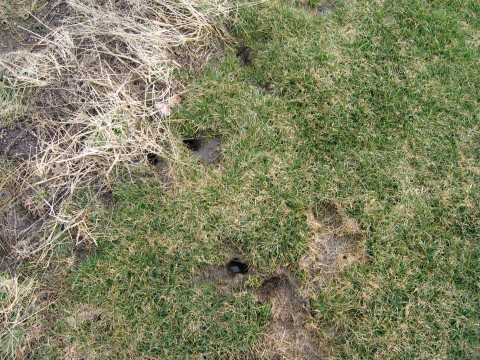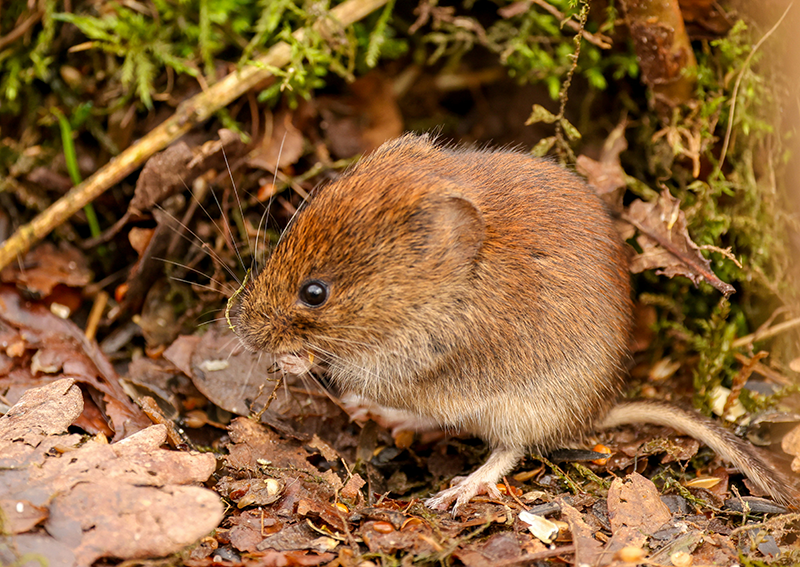Efficient Vole Control Solutions: Handling Vole Pest Issues
Efficient Vole Control Solutions: Handling Vole Pest Issues
Blog Article
Vole Pest Control Demystified: A Complete Review of Infestation Discovery and Reliable Therapy Techniques
As homeowner and garden lovers, the intrusion of voles can be a consistent problem that requires a methodical method for efficient management. By recognizing the behavioral patterns of these elusive rats, one can get beneficial understandings right into their preferences and routines. From refined indications of problem to the implementation of targeted control steps, browsing the world of vole insect control requires a blend of knowledge and critical activity. In this extensive introduction, we will certainly discover the subtleties of vole invasion detection and look into the realm of reliable treatment approaches that can secure your areas from these below ground hassles.
Recognizing Vole Habits Patterns
Comprehending the complex behavior patterns of voles is crucial for successfully implementing parasite control measures in agricultural and household settings. Voles, tiny rats that look like mice but with stouter bodies, are notorious for their quick recreation rates and starved appetites for vegetation. By delving into their behavior patterns, pest control experts can gain important insights into vole behaviors, preferences, and susceptabilities.
Voles are mainly herbivores, eating a vast range of plants, roots, light bulbs, and tubers. They are also respected tunnelers, creating sophisticated underground burrow systems for nesting and foraging. By understanding these habits, pest control professionals can strategically position catches and bait terminals along vole runways and entrance factors, enhancing the likelihood of effective eradication.
Moreover, knowledge of vole behavior patterns can assist in developing safety nets to deter future problems. By dealing with aspects that draw in voles, such as dense vegetation cover and quickly accessible food sources, homeowner can make their facilities less welcoming to these damaging parasites - vole control. Finally, a complete understanding of vole behavior is extremely important in designing efficient and sustainable insect control techniques
Identifying Indicators of Vole Problem
Effective vole pest control starts with quickly acknowledging the indicators of vole infestation on properties. One of one of the most common signs of vole visibility is the visibility of surface runways. These runways are slim pathways through yard or plants that voles produce as they travel between their burrows and food sources. Additionally, vole droppings are an additional clear sign of invasion. Vole droppings are little, round pellets that are typically located along their paths or near their burrows.
In addition to droppings and paths, nibble marks on tree bark and greenery are additionally indications of vole activity. Voles have a routine of gnawing on the bases of hedges and trees, which can trigger damage and potentially eliminate the plants. In addition, the visibility of burrow openings in the ground suggests an energetic vole population. Vole burrow entries are generally tiny and found in grassy or mulched locations.
Being vigilant for these indicators can aid residential property owners find vole infestations early and take proper parasite control measures to stop additional damages.
Applying Targeted Control Steps
What details methods can be employed to efficiently apply targeted control measures for vole bug management on residential properties? Applying targeted control measures for vole parasite administration needs a multi-faceted strategy that incorporates both avoidance and removal approaches. One of the essential techniques is habitat alteration, which entails removing vole-friendly settings such as high yard, weeds, and particles near structures. Setting up barriers like equipment fabric or gravel around yard beds and tree trunks can additionally assist prevent voles.
Capturing is an additional efficient method for controlling vole populations. Live catches can be strategically put along vole runways or delve entries, baited with peanut butter or apple pieces. As soon as recorded, voles must be humanely gotten rid of to a various area to stop reinfestation.
Rodenticides can be used as a last option for severe infestations, yet caution should be exercised to avoid damage to non-target pets. It is important to comply with all safety and security standards and laws when using rodenticides for vole control.
Green and all-natural Treatments
The adoption of ecologically conscious practices can play a pivotal role in managing vole populations without causing harm to the environment. Natural and environment-friendly treatments supply a sustainable strategy to vole pest control, reducing making use of dangerous chemicals and promoting biodiversity in the affected areas.
One efficient all-natural technique is the use of predator pee or predator decoys. Predators like foxes, snakes, and owls are the vole's natural opponents. By tactically putting predator urine or decoys around the infested areas, voles may be deterred from settling in those locations.
Furthermore, planting vole-resistant vegetation can help in lowering vole damages. Plants such as daffodils, crown imperials, and Siberian squill are recognized to be unattractive to voles and can serve as natural repellents.
In addition, creating physical barriers like wire mesh or crushed rock around at risk plants can protect against voles from accessing them. These obstacles can assist secure gardens and landscapes without posing any threat to the atmosphere or other non-target varieties. By including these eco-friendly and natural treatments, vole invasions can be taken care of properly while preserving ecological balance.
Long-Term Avoidance Methods
To sustainably resolve vole problems over time, carrying out positive steps is vital for long-lasting avoidance approaches. By lowering thick plant life, mulch, and mess around buildings, you can make vole control your residential or commercial property much less appealing to voles.
Routine tracking of vole activity is vital for very early detection of any type of signs of invasion. Establishing vole traps can help in managing their populace before it comes to be a full-on infestation. It is likewise vital to seal any entry indicate frameworks or structures to avoid voles from accessing.

Verdict
In verdict, understanding vole actions patterns, identifying indications of invasion, implementing targeted control actions, using eco-friendly and natural treatments, and carrying out long-term prevention methods are crucial action in properly managing vole infestations. By being positive and taking the needed actions to address vole issues quickly, individuals can efficiently control and avoid vole infestations in their properties.

Report this page